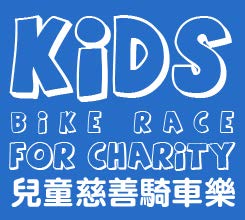暑假雖然可以減低學業壓力,但是同時也會比較容易地破壞孩子健康的飲食習慣和活動。在暑假期間,孩子們通常會吸收更多糖分和吃較少蔬菜喔! 而且他們大部分時間都出去外遊,每天的運動量也會相對應地減少。這項研究報告發表在學校衛生雜誌上,隨著六分之一的美國兒童肥胖和超重的數百萬人,我們需要更加關注這些壞習慣。所以我們除了要放暑假,也千萬不要忽略身體健康囉!

Summertime can wreak havoc with kid’s healthy eating habits and activity. Instead of spending more time outside, young people can become sedentary and consume more sugar and fewer vegetables, according to a study from Columbia University’s Mailman School of Public Health.
The findings of the study were published in the Journal of School Health. With one in six US children obese and millions overweight, these bad habits take on a higher level of concern, writes Ashley Welch of CBS News.
The researchers gained information on more than 6,400 US children and teens, grades 1-12, who were part of the National Health and Nutrition Examination Survey between 2003 and 2008. Some of the kids were surveyed during the summer and others during the school year. The scientists focused on total calories consumed each day, the number of cups of vegetables eaten, and the teaspoons of added sugar consumed.
Included were exercise patterns and time spent in front of a screen. Socio-economic status was also analyzed, comparing families above and below 185% of the poverty line, which is the eligibility level for receiving free or reduced-price school meals.

“There is a body of research showing that all kids learn while in school, but kids continue to learn during the summer break if they are in more resourceful families,” study author Dr. Y. Claire Wang, co-director of the Mailman School’s Obesity Prevention Initiative, told CBS News. “We wanted to answer a similar question of whether summer does that to low-income kids in terms of healthy lifestyle.”
As far as summer break is concerned, income level had little to do with obesity behaviors. Children of all grade and income levels did not meet the government recommendations for vegetable intake, sugar-sweetened beverages, exercise, and time in front of screens. Children and teenagers should get at least 60 minutes of exercise a day, says the US Department of Health and Human Services.

“We were struck by how much room for improvement there is in terms of healthy behavior, as the majority of kids are not even close to the guideline recommended level of physical activity, fruit and vegetable intake, or screen time,” Wang said.
Steve Smith of Medical Daily quoted Wang on the influential importance of school:
“The school environment remains essential for shaping healthy eating and active living behaviors, and schools can play a leadership role in fostering a healthy transition from the school year to summer breaks,” said Wang. “We see from our results a need for school-based obesity prevention efforts to go beyond the school day and the school year.”

The study shows that high school students exercised significantly more during the summer months, but still did not meet the federal guideline levels. The teenagers who exercised the least over the summer were low income girls.
According to the Indian Post-Jagran, the study found that in the summer, young people watched an average of 20 minutes more television a day and consumed an average of three ounces more sugar-sweetened beverage school than they did during the school year.
** Credit to Grace Smith with www.educationnews.org **
Read More 原文請按此: http://www.educationnews.org/parenting/researchers-summer-break-interrupts-kids-eating-exercise-patterns/







